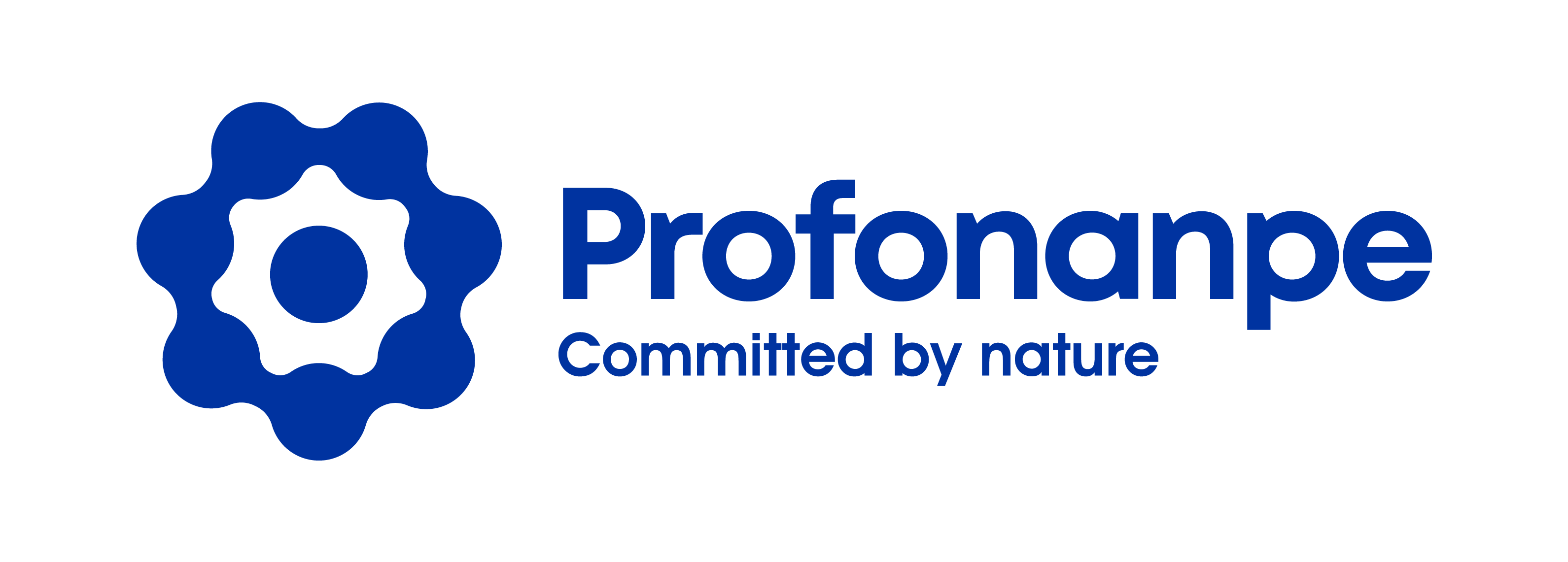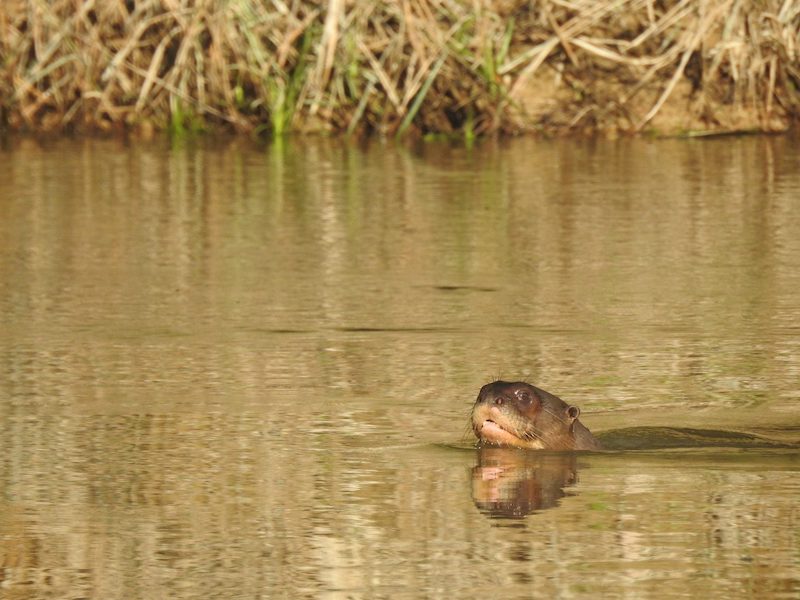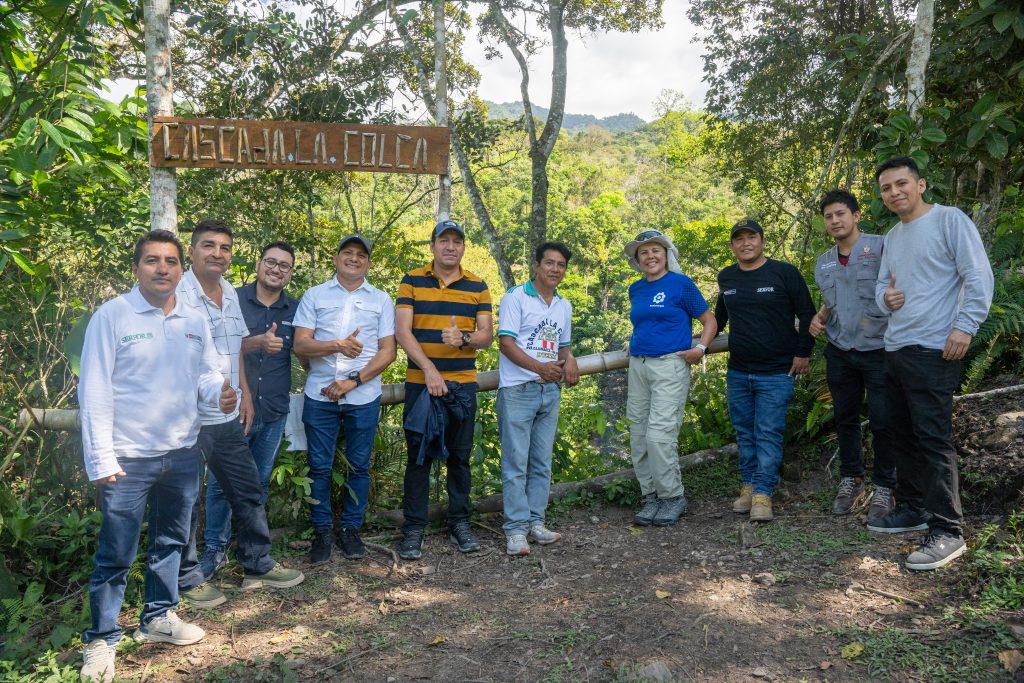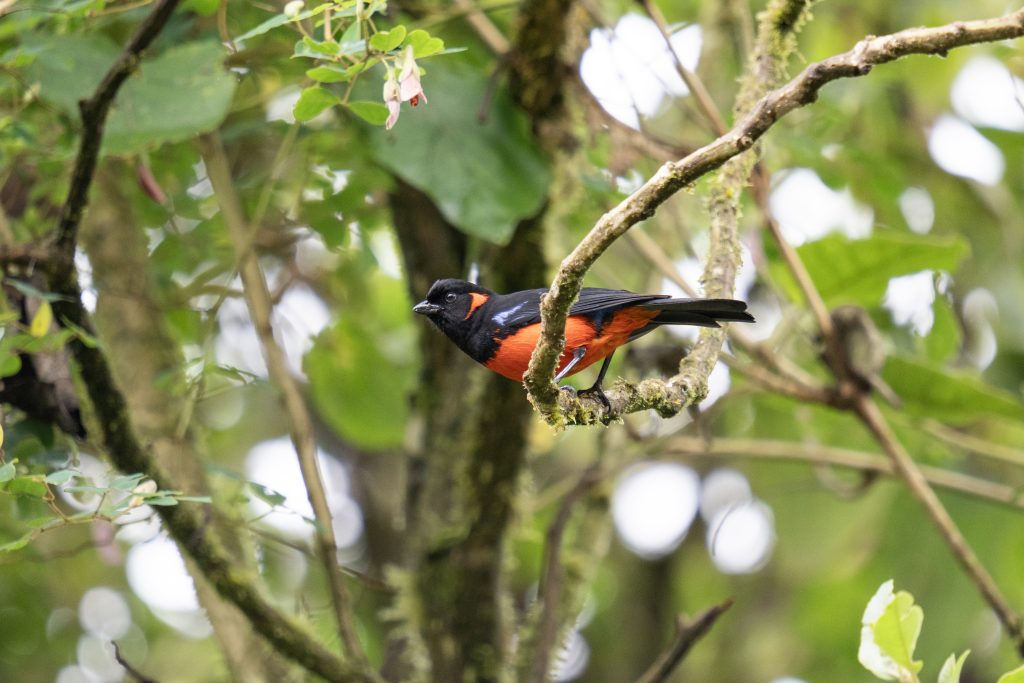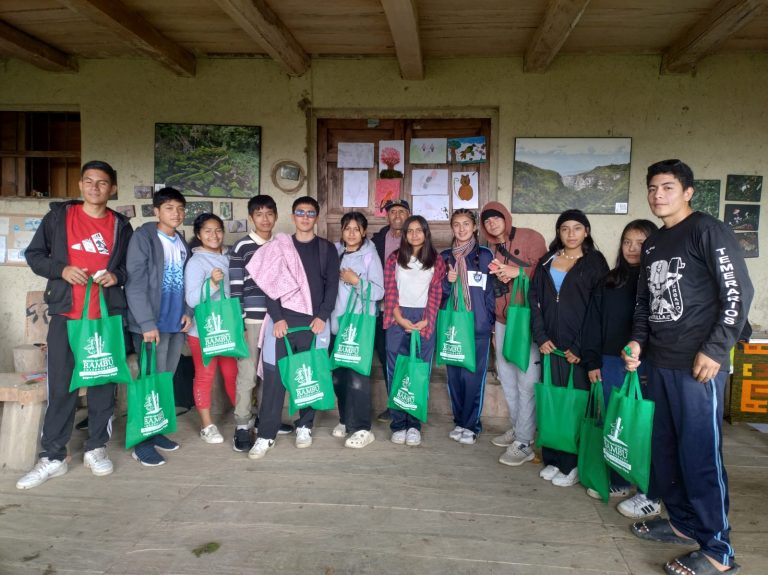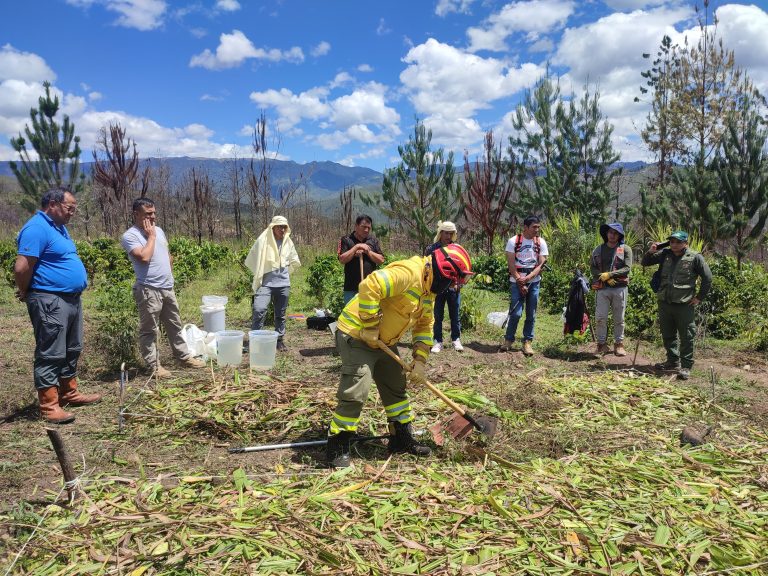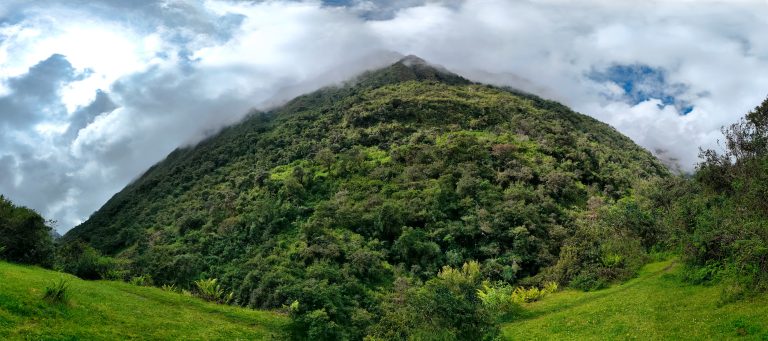Photography: Giant Otter
Photographic credits: YNP Headquarters
An indicator species is an organism whose presence, absence or abundance reflects the state of an ecosystem. Currently, Yaguas National Park (YNP), located in Loreto, is in a good state of conservation, reporting 100% of its territory conserved and free of human activities. This result has been achieved within the framework of the “Bases for the Effective Management of Yaguas National Park” Project, financed by the Andes Amazon Fund and executed by the YNP Headquarters. Profonanpe is part of the project, providing technical assistance, as well as support for monitoring and compliance with the objectives.
Since 2018, the Headquarters has managed to strengthen its surveillance and control activities through overflights, community surveillance and special patrols, which has been favorable for the repopulation of different species that today are indicators of good conservation status. Among the species that indicate the good conservation status of this Natural Protected Area (NPA) are the paiche, the arahuana, the harpy eagle, the choro monkey, macaws, the huangana, the otorongo, the giant otter, the manatee and the white-headed guan.
The paiche and the arahuana suffer great fishing pressure because of their high economic value; however, in YNP, their populations are recovering. In addition, along with the manatee and giant otter, they are considered indicator species of conservation of this NPA because their presence indicates the good quality of aquatic ecosystems, since years ago illegal mining was practiced in the Yaguas River and it was not possible to see these species.
Another conservation indicator species is the harpy eagle, a large bird that is often threatened due to habitat loss. However, today it inhabits the forests of YNP. Due to the hunting pressure that it used to suffer inside and outside of YNP, the choro monkey is not sighted in the vicinity of the communities; however, park rangers report that it is observed with some frequency inside the NPA because it is no longer hunted by illegal loggers who used to carry out their illegal activities in the NPA.
It is also possible to see macaws, which are good indicators of forest quality because they are usually only found in undisturbed habitats such as those of YNP. In addition, the huangana is another species that has increased its population. The huangana is perhaps the most sought-after Amazonian mammal for its meat; however, inside and outside YNP it has the highest number of sightings. The YNP is a reproduction zone for this species and when it disperses in the territories near the Park, it is used for self-consumption by the 26 native communities that live in the area of influence.
Another species that indicates good conservation status is the otorongo, which is often threatened for its skin and fangs, which are used as an aphrodisiac in Asian countries. The otorongo is also considered an umbrella species because its protection in YNP helps conserve other species such as the huangana, añuje, majaz, sachavaca, tapir, deer, among others, on which it feeds.
The white-headed guan, as well as other game birds, are highly prized for their meat, suffering great hunting pressure in the forests they inhabit; currently their presence is only found in areas in good conservation status such as the YNP and they are important seed dispersers.
Finally, community vigilance also plays an important role in mitigating threats to this NPA. Together with the community guards of 16 native communities that have Conservation Agreements and live in the area of influence of the YNP, joint surveillance and control efforts are carried out to serve as the first line of defense against threats that may affect the Park, thus contributing to the repopulation of the fauna. With this project, we can say that we are on our way to a sustainable development model that involves the conservation of species and the strengthening of institutions and leaders involved in their care.

